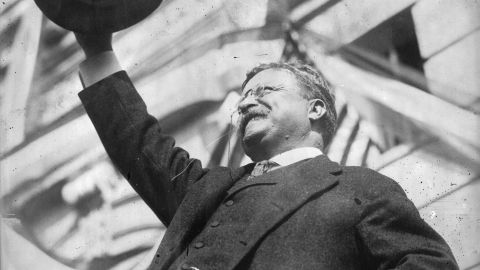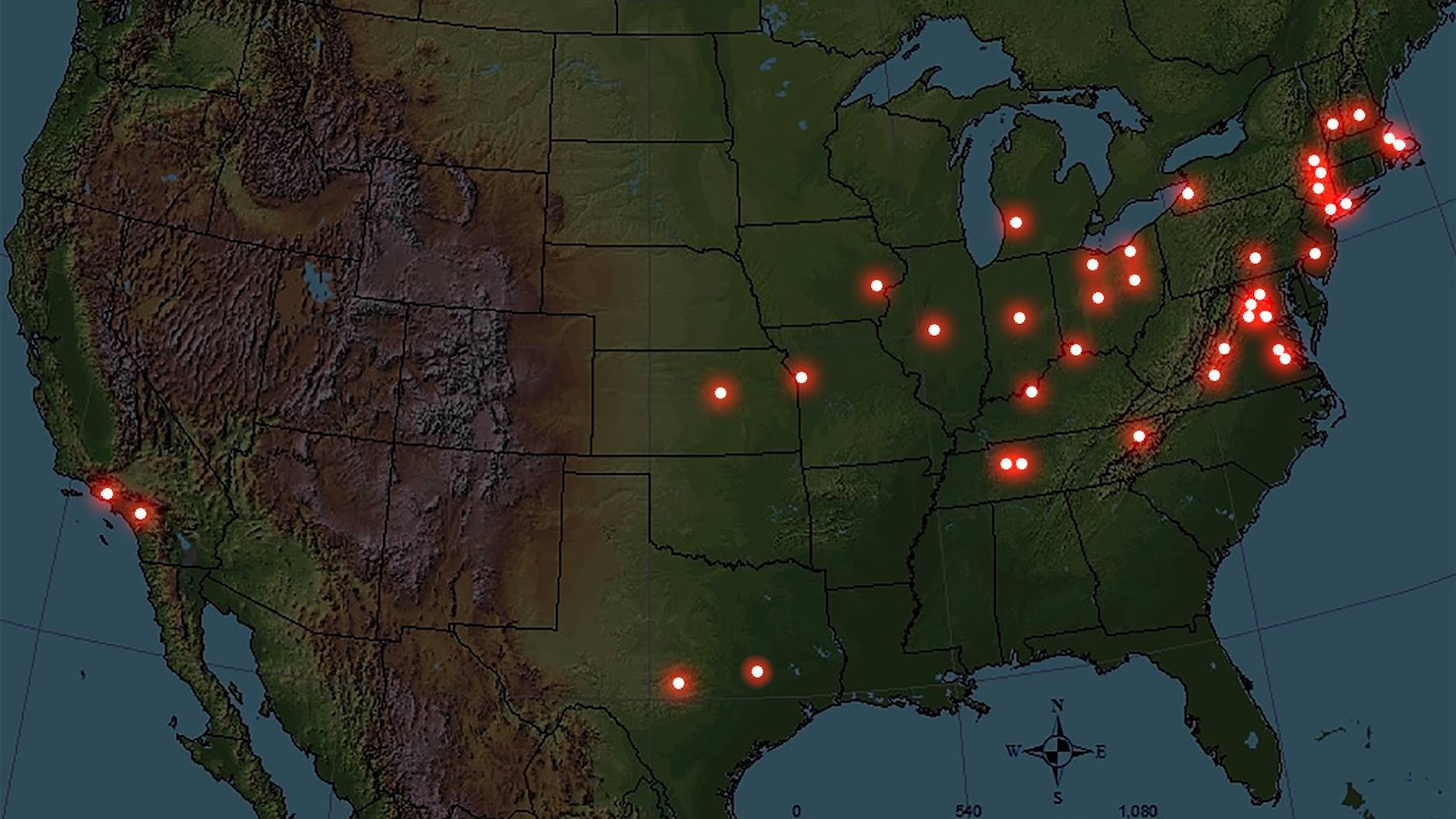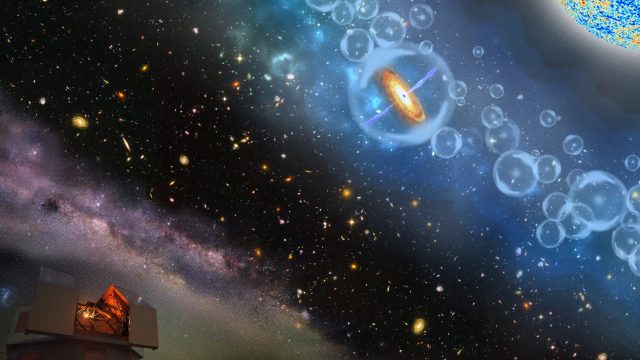How President Teddy Roosevelt faced his rendezvous with destiny

- Anarchist Leon Czolgosz shot U.S. President William McKinley on September 6, 1901. McKinley died eight days later.
- Vice President Theodore Roosevelt thought mental illness lay behind the act but his confidant Henry Cabot Lodge cited populist rage.
- For both men, Roosevelt’s accession to the Presidency felt like a rendezvous with destiny.
On September 6, 1901, the vice president was in Vermont when he learned that a crazed anarchist, Leon Czolgosz, had shot President McKinley. The incident had occurred at the Pan-American Exposition in Buffalo, New York — the same event that Theodore Roosevelt and Henry Cabot Lodge had attended months earlier.
While Roosevelt related to Lodge that McKinley was expected to recover, the vice president related the “stunned amazement of the people over the attempted assassination of the President.” “You and I have lived too long, and have seen human nature from too many different sides, to be astounded at ordinary folly or ordinary wickedness,” Roosevelt wrote Lodge following the tragic events. The sudden and violent attack on the nation’s chief executive had shaken Roosevelt to the core. “It was in the most naked way an assault not on power, not on wealth, but simply and solely on free government,” Roosevelt commented from Buffalo.
Even during the nation’s darkest moment, Roosevelt could not help but mention to Lodge the ovations he received in his visit to Vermont. The vice president eagerly detailed members of the GOP who repeatedly informed Roosevelt they were anxious to nominate him for the presidency in 1904.
The vice president’s description of his popularity with members of the Republican Party in the same letter that described his reaction to McKinley’s shooting can initially be viewed as insensitive. One could also view the shift in tone to mask the terror that Roosevelt experienced upon hearing about the attempt on the life of the president. With the incident occurring on the site where Roosevelt and Lodge had greeted the public three months earlier, either man could have had a similar experience.
In Paris, Lodge was grateful to receive Roosevelt’s detailed report from Buffalo. “It was almost impossible to get news here when we wanted it most. The miserable [Paris Herald] which will publish a yacht race bulletin every five minutes would give only one dispatch some 15 hours late in the day.” Believing the event was “a hideous attempt at murder,” the senator was glad to know that McKinley’s condition had improved.
Lodge understood how deeply Roosevelt wanted the presidency. These instincts might explain Cabot’s lack of a response following T.R.’s descriptions of his popularity around the nation. The senator also must have realized the anxiety Roosevelt experienced knowing that no one was invulnerable from the violence that plagued the Gilded Age.
Roosevelt believed the person behind the attempted assassination of McKinley to be a victim of mental illness. Lodge did not agree. The senator was convinced that the anarchist who had pulled the trigger was a symbol of the undisciplined populism that plagued the nation. “These men are the enemies of government, society, and patriotism. We should fight them as we would any other enemy,” Lodge wrote Roosevelt on September 19.
Lodge was not wrong. The expansion of the economy had improved the lives of many. But not all Americans had benefited. As a result, random violence had shattered portions of the nation throughout the late 19th century.
These attitudes of discontent were displayed by such acts of protest as the Great Railroad Strike of 1877 and the labor riots in Chicago’s Haymarket Square in 1886. Many of these disputes were symbolic of the belief that the social contract between the public and its government had fallen into a state of dysfunction. Lodge contended legislation was necessary to aggressively respond to what he viewed as dangerous behavior.
The senator was convinced that the anarchist who had pulled the trigger was a symbol of the undisciplined populism that plagued the nation.
Believing McKinley was on the road to recovery the vice president headed to the Adirondacks. On September 13 Roosevelt and his family engaged in a leisurely climb up Mount Marcy. It was during their descent the following day when Roosevelt was informed that the president’s condition was growing worse. A bullet lodged in McKinley’s abdomen had resulted in a severe infection causing the president’s condition to deteriorate. Late in the evening of September 14 the man known to his intimates as “the Major” passed away.
Roosevelt immediately departed on a special train for the hundred-mile journey to Buffalo. Reaching the city at 1:30 in the afternoon, he immediately called on the president’s widow. Shortly after gathering with members of McKinley’s cabinet in the living room of the small house where the president had taken his last breath, Theodore Roosevelt became the 26th president of the United States. Lodge, still in Europe but aware of recent developments, was unable to advise his friend during the most critical moment of his career.
Since becoming vice president, Roosevelt had believed that he had made a horrific mistake. McKinley and his associates had locked him away in a ceremonial office with no means of escape. Senator Mark Hanna had warned those who wanted Roosevelt on the podium with the late president that they were placing a dangerous man one step away from the pinnacle of political power.
Roosevelt had indeed become president but not in the way he wanted. “It is a dreadful thing to come into the Presidency this way,” he had written to Lodge. “Here is the task, and I have got to do it to the best of my ability; and that is all there is about it,” T.R. wrote.
From the moment Lodge had begun conversing with Roosevelt on a train ride to Washington in the spring of 1884, the Bostonian believed the young man had a rendezvous with destiny. The senator had pushed and prodded his friend to accept the secondary spot on the ticket with McKinley, never realizing what might occur.
In Roosevelt’s address on “the strenuous life” in 1898, the former Rough Rider had encouraged his audience to test the limits of their abilities with the objective of seeking a life of “strenuous endeavor.” Roosevelt had done his utmost to live by that credo. Preparing to embark on his new journey into the unknown, the new president instinctively understood one is rarely given the opportunity to make history. Realizing that moment had finally arrived, Theodore Roosevelt was not only determined to seize the opportunity but to do so with all deliberate speed.





